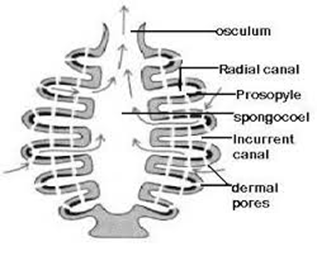Vitamins In Biology - Definition, Classification , Types , Function
- Vitamins are those organic compounds that are recommended in a very short amount in diet however their deficiency turns into a specific disease.
- The term “Vitamine” was coined from the word vital + amine since the earlier identified compounds had amino groups. Later work showed that most of them did not contain amino groups, so the letter ‘e’ was dropped and the term vitamin is used these days.
- They are generally present in our food which we have taken for nutrition.
- · Maximum vitamins cannot be synthesized in our body on the other hand plants can synthesize almost all of them, so they are considered to be an essential food factor.
- · In our body, some of the vitamins which we are needed are secreted by the bacteria of the gut.
- · Different vitamins belong to various chemical classes.
- · A small amount of vitamins used to perform specific biological functions in our body like the growth and health of the organism.
- · Vitamins are nominated by alphabets A, B, C, D, etc however Some of them are further classified as sub-groups e.g. B1, B2, B6, B12, etc.
- · Vitamin A keeps our skin and eyes flourished.
- · Vitamin C helps the body to fight against many diseases and simply get demolished by heat during cooking.
- · Vitamin D assists the body in using calcium needed by bones and teeth.
Classification -Vitamins are classified into two groups depending upon their solubility in water or fat.
- Fat-soluble vitamins -· Vitamins that are soluble in fat and oils but insoluble in water are kept in this group. These are vitamins A, D, E, and K. They are stored in liver and adipose (fat-storing) tissues.
- Water-soluble vitamins -· B group vitamins and vitamin C are soluble in water so they are grouped together. Water-soluble vitamins must be supplied regularly in a diet because they are readily excreted in urine and cannot be stored (except vitamin B12) in our body.
Deficiency Diseases
· Although every person may be getting a maximum diet to eat, sometimes the food may not contain a particular nutrient. If this continues over a long period of time, the person gets to suffer from certain deficiencies.
· Deficiency of one or more nutrients can result in diseases or disorders in our body. Diseases that occur due to lack of nutrients over a long period are called deficiency diseases.
1. Vitamin A——— Night blindness
2. Vitamin B1———Beriberi
3. Vitamin B2——– Ariboflavinosis
4. Vitamin B3 ——–Pellagra
5. Vitamin B5 ——–Paresthesia
6. Vitamin B6 ——–Anemia
7. Vitamin B7 —— Dermatitis, enteritis
8. Vitamin B9 & Vitamin B12 —– Megaloblastic anemia
9. Vitamin C —— Scurvy, Swelling of Gums
10. Vitamin D —— Rickets & Osteomalacia
11. Vitamin E —— Less Fertility
12. Vitamin K —— Non-Clotting of Blood. ·
· So Every vitamin has specific functions in the body.
Vitamin P is also considered a water-soluble vitamin.
- Vitamin P mainly comes from plant sources i.e., fruits and vegetables.
- Brightly colored fruits and red, yellow or orange-colored vegetables are the best sources of vitamin P. Mangoes, oranges, grapefruits, lemon, cherries, blackcurrants, and plums are some good fruit sources whereas carrots, tomato, broccoli, and onions are vegetable sources.
- Green tea and red or white wines are rich sources of flavonoids.
- Milk chocolate and dark chocolate is a good source as well.
- Vitamin P is antioxidant, anti-inflammatory, antiallergenic, antiviral, and anti-carcinogenic
Deficiency
- Diabetics can be deficient in this vitamin.
- Aspirin, birth control pills, and antibiotics either block or break down bioflavonoids leading to deficiency.
- Under major stress - when under stress, the body's systems go into overdrive and use up bioflavonoids and Vitamin C extra fast so need to be replenished quickly.
📚 Top Biology Topics
- Aurelia Aurita Life Cycle: Characteristics, Classification
- Short note on Photosynthesis
- Difference between Prokaryotic & Eukaryotic cells | Biology Blog
- Obelia Life Cycle, Classification, Labelled Diagram | Biology Blog
- Kreb Cycle Steps With Diagram, Steps & Products
- Types of Eggs of Animals in Zoology (Embryology) | Biology Blog
- What are the Important Features of Sycon
- Herdmania's Life: Anatomy, Behavior, Reproduction, and Habitat
- DNA Transcription Process | Central Dogma | RNA Polymerase





👌👌
ReplyDelete